Most preppers already know that OPSEC, or operational security, is an important concept when surviving in the aftermath of any major disaster or other long-term crisis.

A loan word taken from the military, applying the concept to prepping and general survival means taking pains to keep your business your business, and not giving away to the outside world any information that might help them determine what you have, what you are up to and what you are doing.
One chronically neglected sector of good OPSEC in a societal survival concept is that of cooking.
Most of us have plenty of food on hand by now, and even several ways to cook it, but doing the cooking might be just the thing that attracts the wrong kind of attention.
That can definitely lead to a bad outcome for you and yours, so in an effort to prevent that I have prepared a guide that will help familiarize you with good OPSEC concepts while cooking during a disaster.
Why Should You Worry About This?
Before we go any further, it is probably best to address the elephant in the room. Why on Earth should you, or anyone, worry about good security practices when cooking?
Specifically, why should you attempt to cook in such a way to conceal your activities and possibly your presence entirely? Isn’t this the stuff of genuine paranoia? Don’t we have bigger problems to worry about?
Well, the answer really depends on what sort of situation you are facing, how long you expect it to last and where you are. Frankly, the answer also depends on how serious you are as a prepper.
If you’re only dealing with a thunderstorm related to power outage that is expected to last a day or two at the most, you probably don’t need to worry about any of the things I’m going to talk about in the rest of this article.
Whatever you want to cook and however you want to cook it will probably be just fine and incur no negative consequences.
Hell, you might even be able to have a nice little backyard barbecue with your friends and family in the meantime.
However, if you are dealing with the aftermath of a major catastrophe and all the associated crises, one that strains people, supply lines and the rule of law to the very breaking point, you had better take what I’m about to tell you seriously.
In such cases, particularly ones of indefinite duration, they’ll be plenty of other people that will want what you have and they lack, and that might be willing to hurt you or even kill you, and kill your family, to get it.
Prolonged physical and emotional agony along with a lack of basic necessities has a way of making people crazy. What does that look like? We will talk about it in the next sections.
Disasters Cause Chaos, Chaos Creates Opportunity (for Bad People)
First and foremost it is no surprise, or rather it shouldn’t be, that disasters of all kinds and all sizes create opportunities for bad people.
When people are distracted and disorganized and first responders, particularly law enforcement, have their hands full on all fronts bad guys take advantage of the opportunity and step their game up. Or stated more simply, when the cat is away the mice will play.
Even localized disasters like flooding and tornadoes invariably see an uptick in theft, looting, robbery, burglary, and assault.
Some of these criminal actors come from within your very own community, but others, if you can believe it, come from elsewhere.
These special scumbags might be thought of as disaster tourists, looking to make a score when others are suffering.
Chances are signaling your presence via running generators, smoke, fires and the other associated indicators of cooking in the aftermath of any disaster will draw these people to you like dogs to a meat truck.
Sustained Lack Will Make People Desperate
On the other end of the spectrum, you’ll have people that are simply desperate. People that desperately need gear and supplies, people that need water, and people that need food.
As one old saying goes a rumbling tummy will put all principles to a severe test.
Whether or not they were prepared is irrelevant: they are all out of the survival necessities that they must have, and the lack has become so profound that they could become willing to use force to get what they need for themselves and their loved ones.
This is a tragic situation to be sure, but consider the alternative. If they don’t even know you are there, and there’s no obvious indication that you have food, you greatly reduce the chances that you’ll even be confronted with one of the poor wretches.
For the record, I’m not saying that you should or should not share your food with these desperate survivors.
I am saying that unknown contacts with starving and desperate people have a greatly increased probability of conflict. You are better off avoiding it.
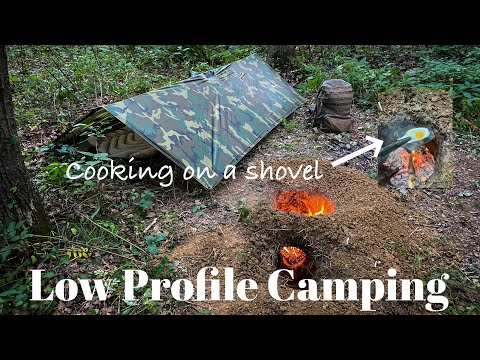
What Security Factors are Associated with Cooking?
So, we know now that cooking activity might just be the thing that draws unwanted visitors to you. Why is that, and what are the signals that you put out into the world when cooking?
By understanding what these signals are, and working to eliminate or minimize them, you lower your overall profile in all circumstances when cooking.
Light
Depending on what you are using to cook with, light may be a major factor or completely a non-issue. Obviously, the extreme heat that is required for cooking almost always entails a certain amount of light pollution.
This is at its most apparent and most notable was something like an outdoor fire. However, even using a fireplace or wood-burning stove inside will produce ambient light that is readily apparent and visible through windows.
Using something like a compact cooking stove, particularly one that uses alcohol or some other low-flame fuel can virtually eliminate the typical light of an open flame.
Electric appliances like microwaves and toaster ovens are also simple to conceal completely.
Smoke
Smoke is a big one. Rising smoke from a campfire, grill, fireplace, wood stove or any other inefficient source of combustion can rapidly give away your position and activity in the daytime and even at night with clear skies.
Smoke is one of those things you can try to manage but it is extremely difficult to eliminate entirely when you are working with an open flame. Using the right fuel and maximizing efficiency can help to minimize smoke, as can using other tricks to dissipate or thin out what smoke is emitted.
In rural areas with less human activity overall, smoke is far more likely to be noticed. Poor air quality or a preponderance of other fires in its built-up and urban areas make smoke less of a concern.
Noise
Noise is another factor attendant with cooking that is overlooked or minimized much of the time.
It could be the clanging of cookware and utensils, the crackle of a fire, or just the general din of human activity.
Even talking or laughter that accompanies a meal might be enough to entice others to take a closer look.
Appliances, of course, make a certain amount of noise with microwaves being the chief offenders.
Electric stove tops of all kinds make very little noise aside from the creaking of their elements and a soft hum.
However, depending on your own situation and infrastructure the thing supplying the electricity to those electric appliances might make a ton of noise.
As always, gasoline and diesel generators tend to be quite noisy and will readily draw in looky-loos, thieves, and anyone else who is looking to get what they need.
Modern propane generators tend to be a far sight quieter. Solar generators, battery banks, and similar power solutions are nearly silent.
Aroma
Another factor that is attendant with cooking is the aroma, and this one might be nearly inescapable. Cooking food creates, usually, attractive smells that carry farther than you think.
Whether or not you are cooking indoors or outdoors will influence this significantly, as will the prevailing wind direction.
Cooking larger quantities of food over an open fire will generate a considerable aroma, whereas smaller quantities in an enclosed container or appliance will help to minimize the transmission of odor.
As expected, certain foods are inherently more aromatic when they are being cooked, and depending on what you like to add to these foods in the form of herbs and other seasonings the aroma might be intensified.
If you are in an area that is less populous or one that has many background smells forming a general miasma, aroma might be of less concern.
However, do not underestimate it, and a person who is very hungry will be able to home in on it with surprising ability.
Intel
On a more meta level, cooking gives people other information about you if they’re able to discern your presence.
Do you still have electricity? Where is the electricity coming from? If you are using fire might you have other firewood or other fuel?
The fact that you are cooking obviously tips people off to the fact that you have food of some kind, at the minimum.
If you’re using a grill you have propane or charcoal. Maybe the fact that you seem awfully well prepared for events will inform their opinion on the rest of your preparations, perhaps the ones you have lurking right out of sight.
You got the idea. When people can see that you are cooking up more or less as normal you’re going to seriously raise your profile in their eyes concerning what you might have that could benefit them.
Maybe the “ask” will come in the form of pleading and groveling. Maybe the ask will come at the barrel’s end or at knife point.
Does it Matter What Kind of Food You Cook?
When you are concerning yourself with operational security while cooking, even the type of food you have or plan on cooking it makes a difference.
Generally speaking, the longer the food takes to cook and the more sustained heat it requires or higher temperatures, the harder it is going to be to conceal your activity.
Consider the difference between heating up something like a TV dinner in your microwave versus cooking up all those same things yourself on a stove top or in your oven. There is something of an economy of scale at work here.
Similarly, grilling up whole animals or large cuts of meat will virtually necessitate you to do it on a fireplace, over a fire pit, or on an outdoor grill, dramatically raising your profile at the same time. In some cases, it might be impossible to hide what you are doing.
Minimizing Your Presence When Cooking is Possible with Smart Food Choices
On the other end of the spectrum, it is possible to prepare and eat food without raising your profile in any appreciable way.
Food that can be cooked in a bag or pouch in boiling water will not emit much in the way of smoke, aside from what the fuel itself generates, and also will help cut down on aroma.
Many foods don’t require cooking at all depending on their preparation and packaging and are ready to eat as soon as you open them.
Things like jerky, trail mix, canned soups, stews, meats, and vegetables, freeze-dried options and more are all nutritious, reasonably filling, and very easy to prepare.
Though it is true they do not afford that happy feeling or general morale boost of a properly prepared, hot meal they certainly beat a rumbling tummy and they have an advantage all their own when it comes to keeping your business and activity on the down low.
If you live in a densely populated area, particularly one that will be vulnerable to supply chain and food shortages in the aftermath of a major disaster, I would make it a point to heavily invest in such foods to the exclusion of others that mandate significant cooking.
Use Pouches and Foil Wrapping When Possible to Cut Down on Aroma
Whatever kind of food you are preparing, and however you are preparing it, it is possible to reduce aroma and potentially even cut down on cooking time by wrapping the food in aluminum foil or putting it in some other container for the duration.
Instead of grilling open cuts of meat and vegetables over an open fire or on your grill, maybe consider making a nutritious stew instead utilizing a dutch oven.
Meat and vegetables alike, even grains and other things can be prepared inside a sealed foil pouch to help keep in moisture and also cut down on aroma as described.
It might seem like a meaningless or marginal step to take, but keep in mind that everything you do to reduce your profile and decrease the chances that someone will detect you by any of the signals detailed in the previous section is worthwhile, particularly if you’re in a populated area or along a likely line of drift or travel near a populated area.
Aroma is always tricky because, if the wind shifts, you don’t know who might be able to pick up on it and from where they might approach.
For those who live in apartments or other multi-family residential buildings, cutting down on aroma is truly a priority.
Pros and Cons of Various Cooking Methods
Now, if prior to this point you have been broadly unaware of the importance of OPSEC pertaining to cooking in the aftermath of a disaster, this doesn’t mean you need to throw out everything you’ve already purchased.
Every good prepper knows that every piece of gear, every tool, is just that: a tool in the toolbox, and all have their own intended uses and merits. They all also have their own disadvantages, ones you should strive to minimize.
Understanding where various cooking methods and appliances fit into your objectives will let you pick the right one for your application, or at the very least minimize the risks of using what you have.
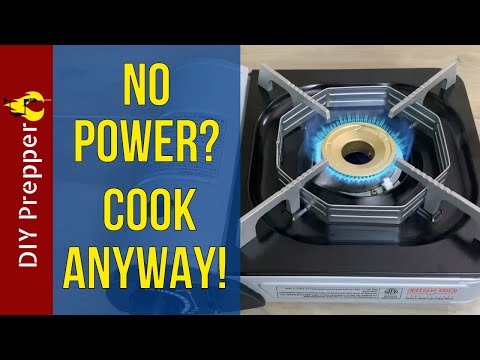
Indoor
The following methods are those that are typically employed indoors, though it is not out of the question you might use them outdoors in conjunction with a generator or on an ad hoc basis.
Electric Stove / Cooktop
For most of us, our electric stove and cooktop is the main appliance in our kitchen. Undoubtedly convenient and effective, it will unfortunately likely be offline in the aftermath of any serious disaster thanks to a knocked-out power grid.
Did you have a generator, whole house battery backup or other personal electrical infrastructure, you might choose to still use your electric stove and cooktop though you should know it is a serious power hog.
If you can use it, it will be convenient and low profile, emitting very little light and virtually no smoke unless you burn the turkey again.
Gas Stove / Cooktop
If you don’t have an electric stove and cooktop in your kitchen, chances are you have a gas version instead.
A gas stove and burners have the advantage of remaining operational in the aftermath of losing power, but on the other hand, there is no guarantee that gas will continue to flow to it unless you have a large tank on your property or can connect it with specialized adapters to portable tanks.
Compared to their electric cousins, they operate very much the same although their open flames emit slightly more light.
Assuming you have reliable access to gas for fuel, they have a major advantage over electric stoves and cooktops because you won’t need to run a generator to power them.
Toaster Oven / Microwave
Believe it or not, a toaster oven and microwave might be a survival mainstay in a long-term crisis situation assuming you have the power infrastructure to operate.
Producing very little light, no smoke, and minimal noise is the indoor option of choice assuming that you can minimize or eliminate noise concerns related to powering it.
This might be a bridge too far for some, because the generator, if you are using one, might be chiefly responsible for attracting attention.
But if you have a quiet running generator or some alternate source of electricity your microwave can prove to be surprisingly efficient for your purposes.
A toaster oven fits into the same roll, more or less, only it takes longer to cook food as a rule but generally uses less power in the bargain.
Wood Stove
A wood stove can be a prepper’s best friend, capable of supplying heat, light and even cooking up a meal just like the old days. They are undoubtedly adaptable and surprisingly efficient in their modern iterations.
However, their chief limitation is that they rely on wood for fuel, and burning wood always produces a lot of smoke with few exceptions.
It should be noted, however, that a properly maintained and installed wood stove can be designed and fueled in an efficient way to produce very little smoke even when used continuously.
That being said, there is not much you’ll be able to do to disguise the column of smoke rising from the chimney pipe.
Fireplace
A fireplace can give you many of the same advantages as a wood stove, though it is one that is usually not nearly as efficient.
For centuries, the fireplace was not just a method of heating a home but also the primary way that cooking was done. With the right specialized cookware, you can do the same.
Owing to the more open nature of a fireplace anytime you’re using it to cook you’ll be generating significantly more light inside an entire room, light which will be easily visible as a cheery glow through the windows at night.
Of potentially more concern, a fireplace also generates considerable smoke, smoke which will go right up and out the chimney in quantity.
Outdoor
Outdoor cooking techniques and appliances are exactly that, those that are almost invariably used outdoors.
Unlike indoor options which might be rigged up for outdoor use, with few exceptions you never want to use these outdoor options inside a structure.
Although tempting in an effort to lower your profile, all of these options create massive emissions of carbon monoxide gas.
Carbon monoxide is deadly, and people die from subsequent poisoning every single year. Don’t make that mistake.
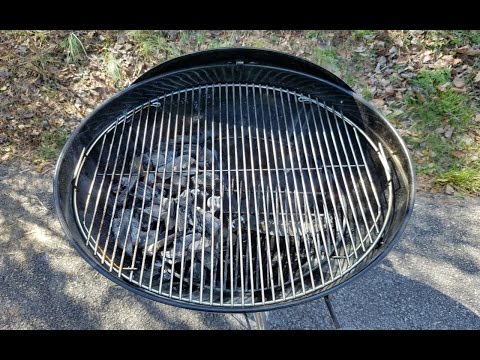
Propane / Charcoal Grill
One of the best and most convenient outdoor cooking options is the one that you most probably already have.
Your backyard propane or charcoal grill is easy to use, portable and convenient, but one with a very high profile meaning it might be of limited use except during low-intensity and low-risk situations.
Nearby people can easily hear your grill as it pops and sizzles, and seemingly everyone in the county is going to smell it when you are cooking with it. Everyone knows what that distinctive backyard barbecue smell is, trust me.
All of these grills emit lots of smoke, and if used at night, the flare of open flames, particularly when you remove the lid, is highly visible to anyone within line of sight.
Unfortunately, there is not much you’ll be able to do to minimize any of these disadvantages.
If you’re in a pinch, consider using them to boil water for food preparation as described above in order to cut down on smoke somewhat, particularly if you have a propane grill.

Camp Stove
A camp stove, particularly in the form of an ultra-lightweight portable burner with an accompanying fuel can, represents one outdoor cooking option that has some utility indoors because they are typically low emission.
Most produce an intense but barely visible flame, particularly when using certain fuel types, and they are extremely efficient for quickly heating small quantities of fuel and water.
They produce very little smoke, hardly any noise, and are easy to emplace or hide when required.
Although only suitable for preparing small, simple meals for one or two people at most in a reasonable amount of time, their sheer versatility makes them an attractive option for our purposes.
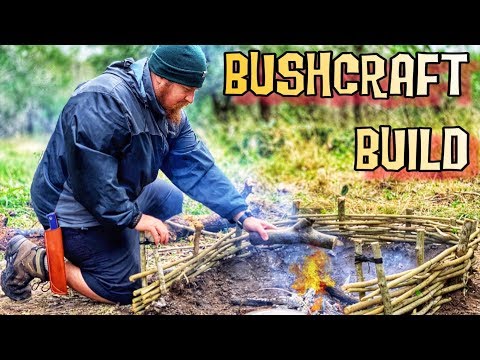
Fire Pit / Camp Fire
A fire pit or open campfire, rather cook fire, outdoors has all of the versatility and advantages that a fireplace or wood stove does, only it leans even harder into their disadvantages.
Producing a tremendous amount of light and smoke that will be visible for miles, you should only use a fire pit or cook fire for the purpose if you have no other choice.
Don’t get me wrong, it can be done but you aren’t going to be hiding what you are doing.
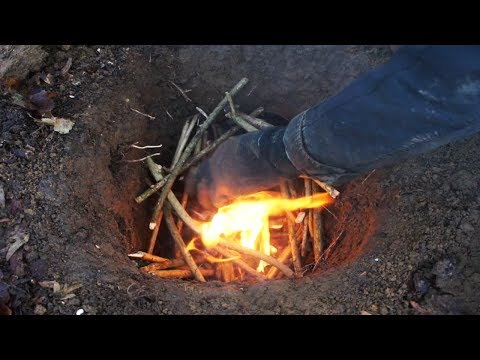
Dakota Fire Pit
Never say never. A Dakota fire pit, sometimes called just a Dakota fire, is one variation on an outdoor campfire or cook fire they can help you keep a surprisingly low profile if you must cook outside over open flames.
Essentially a recessed, open pit dog in soft ground and fed from another nearby hole connected to it by a tunnel, think of it as a low-tech jet stove and you are getting pretty close.
Aside from keeping the open flames mostly below ground level, the oxygen supply that feeds the fire will help it burn hotter, meaning that you get more bang for your buck out of any fuel you feed it but also helping to minimize smoke because of hotter combustion temperatures and reduced soot.
This is an invaluable technique for all preppers, but particularly for those who want to reduce their profile if forced to cook outdoors.
A thorough overview and walkthrough are beyond the confines of this article, but we have several good ones that can tell you more right here on Modern Survival Online.
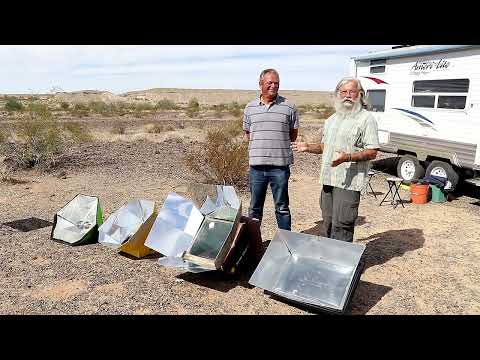
Solar Oven
Solar ovens are one of the very best low-profile outdoor cooking options. Using nothing more than that copious energy of the sun, they can cook food nearly as well as an electric oven, doing everything from roasting whole cuts of meat to baking bread.
All you’ll need to do is position the thing properly in direct sunlight while the sun is out. That, and keep an eye on your food because it can still burn!
They don’t produce any smoke, they don’t make noise, and they don’t create any secondary noise from a power supply.
However, the aroma of cooking food might still be an issue, and obviously, you can’t get any cooking done when the sun isn’t out.
This will necessitate you to handle any cooking during the daytime which may or may not be a problem for you depending on your specific circumstances.
Minimize Your Presence, Even When Cooking
It is no exaggeration to say that cooking carelessly in the aftermath of a disaster situation might get you, your loved ones, and anyone else in your group into an unwanted conflict.
By learning to maximize OPSEC and implement correct procedures when cooking you can greatly reduce your profile and hopefully avoid negative outcomes as a consequence.
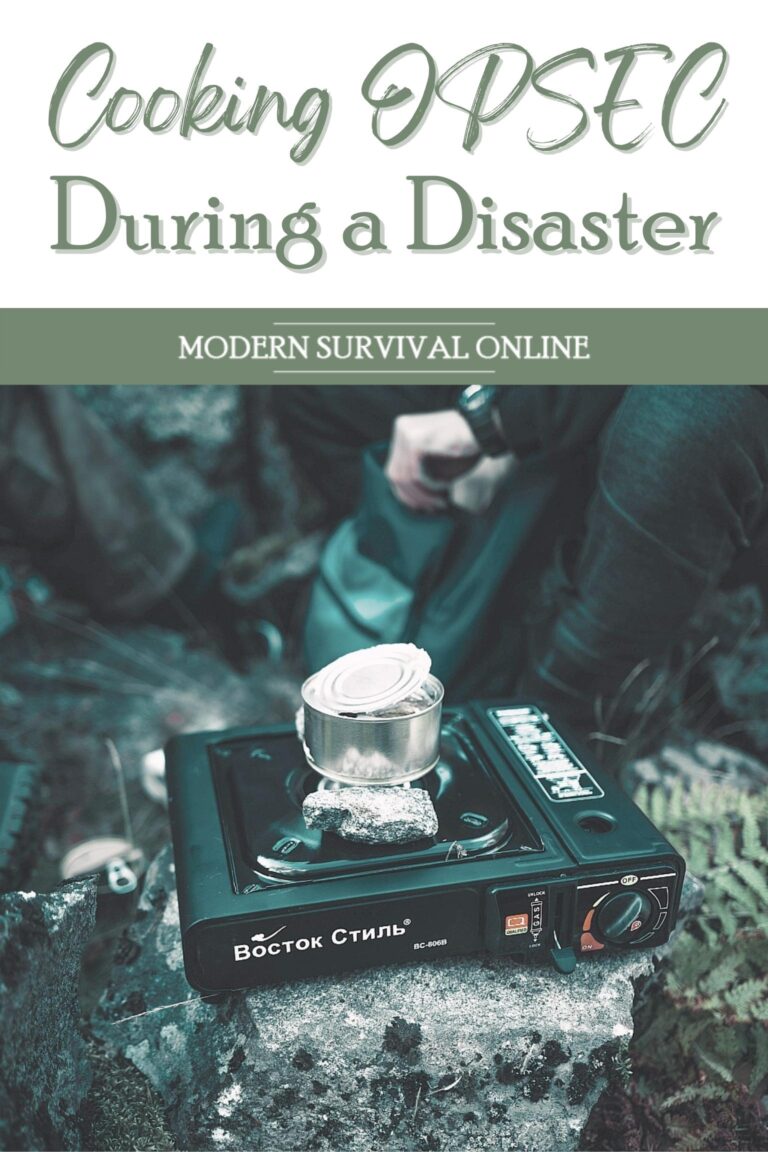
via Modern Survival Online https://ift.tt/aLygtB6
No comments:
Post a Comment